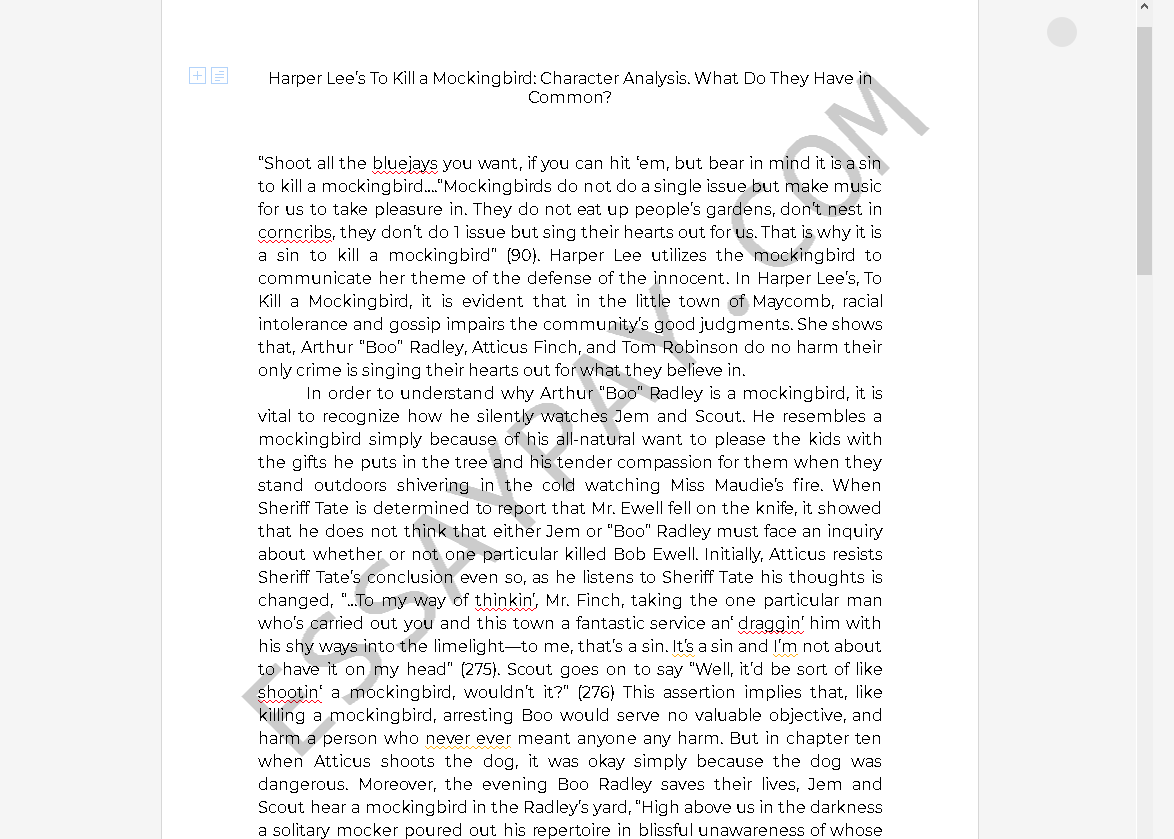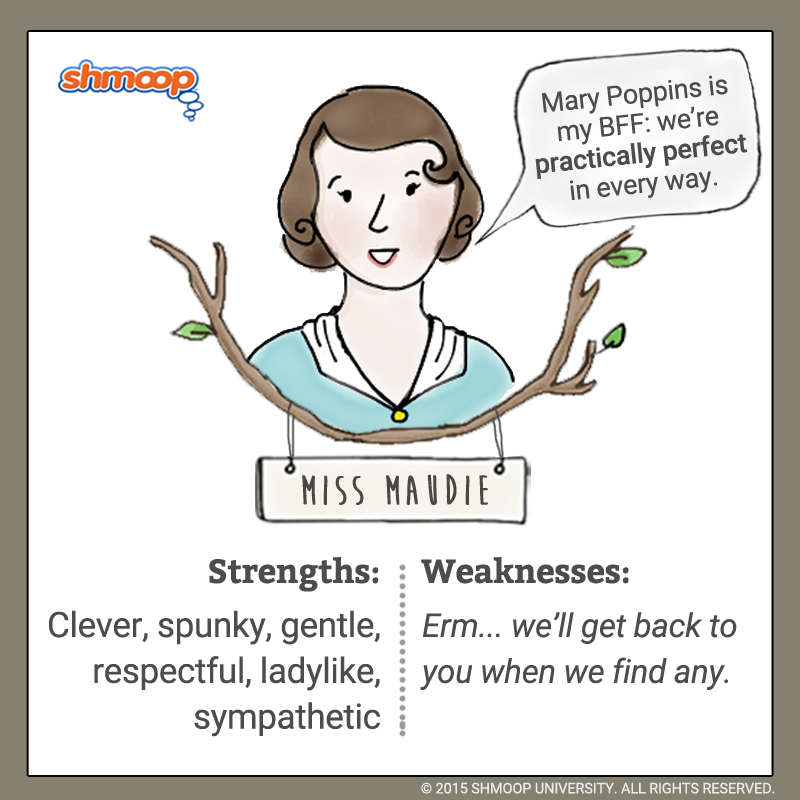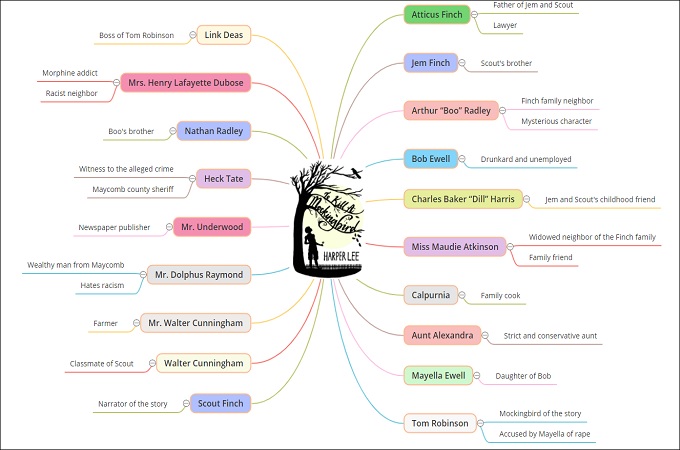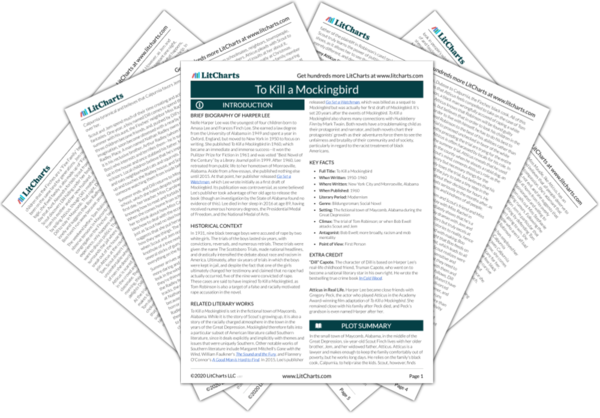"To Kill a Mockingbird" is a classic novel by Harper Lee that tells the story of Scout Finch, a young girl growing up in the deep south during the 1930s. Throughout the course of the novel, Scout encounters a number of memorable and complex characters who help shape her understanding of the world and her own values. In this essay, we will explore the characters of Atticus Finch, Boo Radley, and Tom Robinson, examining how they contribute to the overall theme and message of the novel.
Atticus Finch is a central character in "To Kill a Mockingbird." He is a lawyer and the father of Scout and Jem, and his moral character serves as a guiding force throughout the novel. Atticus is a man of principle and integrity, and he consistently stands up for what he believes in, even when it is difficult or unpopular. He is a role model for his children and a beacon of hope in a world that is often harsh and unfair.
One of the most significant ways in which Atticus demonstrates his character is through his defense of Tom Robinson, a black man who has been falsely accused of rape. Despite facing immense pressure from the community and personal risks to himself and his family, Atticus refuses to back down from the case. He recognizes that Tom is innocent and that it is his duty as a lawyer to provide him with a fair trial. In doing so, Atticus stands up for justice and equality, and he sets an example for his children and the community about the importance of standing up for what is right.
Another memorable character in "To Kill a Mockingbird" is Boo Radley. Boo is a mysterious figure who lives next door to the Finch family, and he is largely misunderstood by the community. He is seen as a strange and dangerous person, and the children in the neighborhood often tell stories about him. However, as Scout gets to know Boo through the course of the novel, she begins to see him in a different light. She comes to understand that Boo is a kind and compassionate person who has simply been misunderstood and mistreated by those around him.
Boo's character serves as a commentary on the dangers of judging people based on appearances and rumors. He also serves as a counterpoint to the prejudice and intolerance that is present in the community. Through Boo, Scout learns the importance of empathy and understanding, and she comes to see the value in getting to know people on a deeper level rather than judging them based on appearances or preconceptions.
Finally, Tom Robinson is another important character in "To Kill a Mockingbird." Tom is a black man who has been falsely accused of rape, and he serves as a symbol of the racial injustice and prejudice that was prevalent in the south during this time period. Tom's character highlights the unfairness of the legal system and the dangers of racism and discrimination. His fate serves as a powerful reminder of the importance of justice and equality for all people.
In conclusion, the characters of Atticus Finch, Boo Radley, and Tom Robinson are all central to the themes and messages of "To Kill a Mockingbird." These characters serve as examples of moral courage, empathy, and the importance of standing up for what is right. They help to illustrate the themes of justice, equality, and understanding, and they help to make "To Kill a Mockingbird" a timeless and meaningful novel.
In "To Kill a Mockingbird," Harper Lee presents a poignant portrayal of human nature through a host of diverse and multidimensional characters. Through the eyes of the young and innocent Scout Finch, the reader is able to gain a deeper understanding of the various personalities that shape the small town of Maycomb, Alabama during the 1930s.
One of the most prominent characters in the novel is Atticus Finch, the moral compass of the story and the father of Scout and Jem. Atticus is a model of integrity and justice, standing up for what is right even when it goes against the grain of the prejudiced society in which he lives. His unwavering commitment to fairness and equality, particularly in his defense of Tom Robinson, a black man falsely accused of rape, earns him the respect and admiration of his children and the reader. Atticus's wisdom and compassion serve as a beacon of hope in a world marred by racism and intolerance.
Another significant character in the novel is Boo Radley, the mysterious and reclusive neighbor of the Finch family. Initially viewed as a frightening and bizarre figure by Scout and Jem, Boo's true nature is revealed to be one of kindness and compassion. Despite his initial reservations, Boo ultimately intervenes to save the children from danger and becomes a symbol of the inherent goodness that exists within every person.
However, not all characters in the novel embody the virtues represented by Atticus and Boo. Characters such as Bob Ewell and Mrs. Dubose serve as examples of the worst aspects of human nature, representing ignorance, bigotry, and hatred. Through their actions and behavior, Lee highlights the destructive power of prejudice and the importance of standing up against it.
Overall, the characters in "To Kill a Mockingbird" serve as a microcosm of human nature, showcasing the complex interplay of good and evil, right and wrong, and the various shades of grey that exist within each person. Through their actions and interactions, Lee presents a nuanced and thought-provoking exploration of the human experience.









